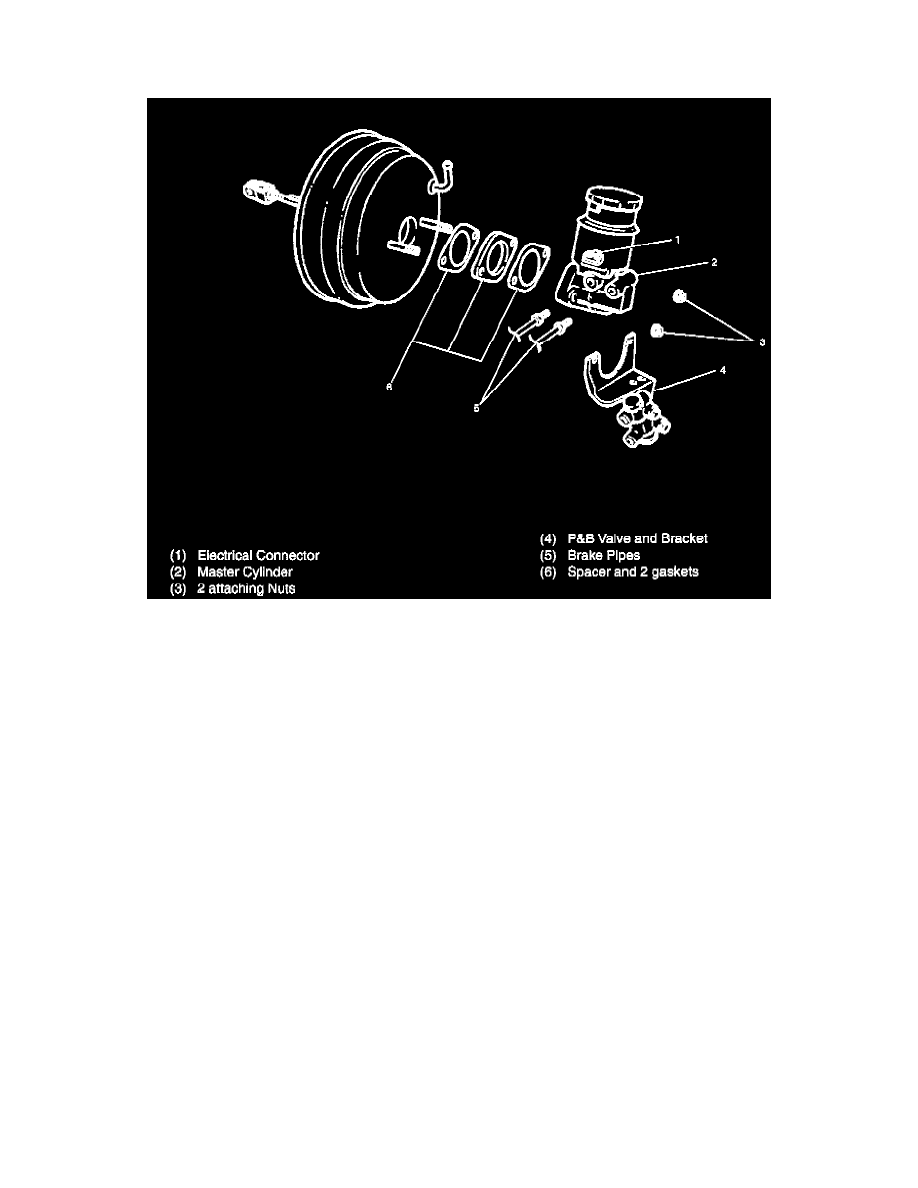Trooper LS V6-3.5L (1998)

Brake Master Cylinder: Service and Repair
Brake Master Cylinder
REMOVAL
CAUTION: When removing the master cylinder from the vacuum booster, be sure to get rid of the internal negative pressure of the vacuum booster
(by, for instance, disconnecting the vacuum hose) in advance.
If any negative pressure remains in the vacuum booster, the piston may possibly come out when the master cylinder is being removed, letting the brake
fluid run out.
While removing the master cylinder, further, do not hold the piston as it can be easily pulled out.
Outside surface of the piston is the surface on which seals are to slide. Care should be taken to keep the surface free of cuts and dents.
1. Disconnect electrical connector.
2. Remove brake pipes after disconnecting the brake pipe, cap or tape the openings of the brake pipe to prevent the entry of foreign matter.
3. Remove 2 attaching nuts.
4. Remove P&B valve and bracket.
5. Remove master cylinder.
6. Remove spacer and the 2 gaskets.
INSPECTION AND REPAIR
Master Cylinder
The master cylinder is not repairable and must be replaced as a complete assembly if found defective.
Inspection
Excessive brake pedal travel, malfunction or dragging brake suggests that the master cylinder is defective. In such cases perform the following visual
check. Visual Check Make parts replacement as required if wear, distortion, nicks, cuts, corrosion, or other abnormal conditions are found through the
following parts inspection:
-
Master cylinder body
-
Fluid reservoir
-
O-ring
